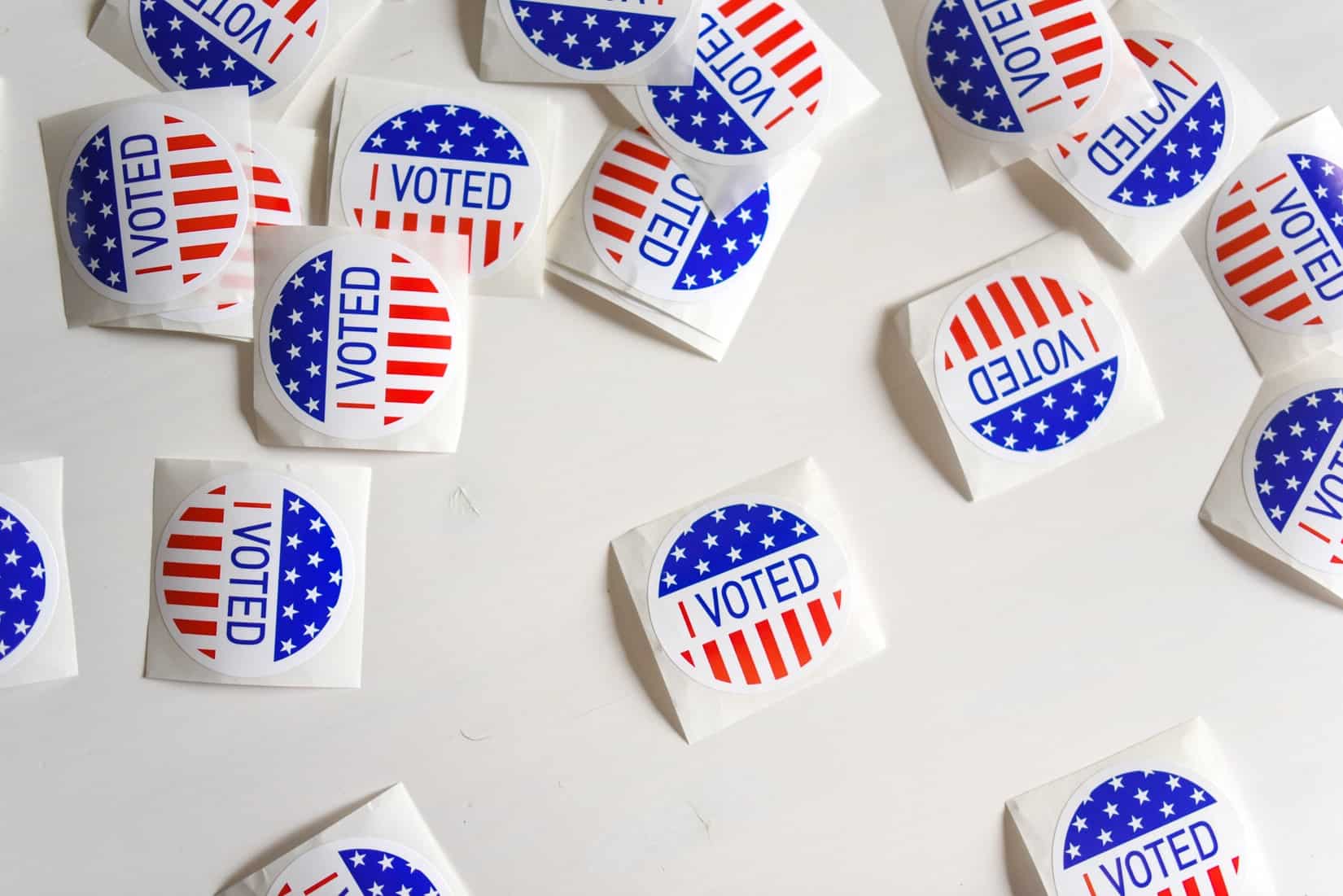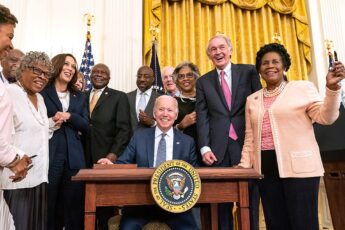Regardless of if it’s a presidential, a mid-term election year, or an “off” election year, it’s essential to incorporate voting and elections into your civics or government class every single year.
It can feel tough to do well if your students aren’t anywhere near 18, or if many don’t know much about the political parties, the candidates, or the issues.
Then on top of it all is the practical side—how to teach this crucial topic that doesn’t involve starting from scratch every single year?
As a Civics teacher, I needed a plug-and-play approach that’d work every year. So, I made sure to build my voting and election unit to balance ready-to-go materials with flexibility to accommodate each year’s ballot.
It means this unit has a little bit more prep work than the rest of my Civics curriculum, but knowing the more kids are exposed to voting, the more likely they’ll become voters makes it worth it to me.
So, here are some of my favorite tried-and-true lesson ideas you too can incorporate into ANY upcoming election.
(Pre-)Register Students to Vote
If you teach seniors, schedule a day in class to register or pre-register them to vote. The process is different for each state, so be sure to look into it well before Election Day. Many states allow 16- and 17-year-olds citizens to pre-register, some allow just 17-year-olds, some use a national form, others have an entirely online process.
Vote.gov is great starting point to learn how to register where you live. There’s even a National Voter Registration Day (the third Tuesday of September)—a great excuse for when to do it each fall!
Of course, not too many will be 18 by early November, but spending 10 minutes of class showing students how to do is a great use of time. Also, not every student will be eligible or want to pre-register, so be sure to stress not registering is totally okay too.
Research Political Party Platforms
How much do your students accurately know about the Democrat and Republican platforms? What about any other third parties? Likely not much!
So, take them to the source and expose your students to the words of the parties’ own platform statements to see with which party they most align.
I hand out copies of 5 U.S. parties’ preambles (Constitution, Democrat, Green, Libertarian, and Republican) after removing their parties names. Then student closely read what they are truly saying, not what they think the party is all about. This is really eye-opening for many!
You can also give each student an issue, like health care or the environment, and have them research what each party believes and proposes for just that issue. Then present finding to the class for a more in-depth exercise. I have kids make flip-up posters for a gallery walk activity.
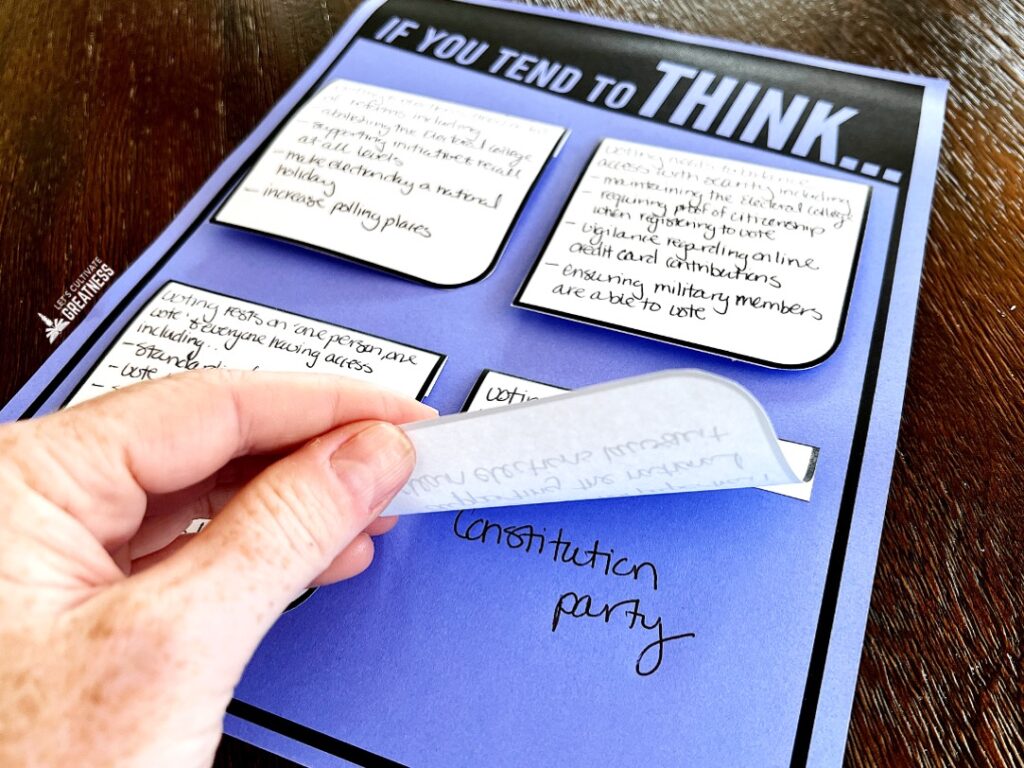
In election years with fewer candidates or propositions to explore, I like doing both these activities.
I find this is way more effective than taking a party alignment quiz. Those often have bias issues, only cover Democrat and Republican parties, and include questions that need a lot of explanation before students can decide which party they lean more towards.
I share about these party platform activities in more detail in another blog post if you are interested in learning more!
Connect with Your Local Elections Office
If you state offers paper voter pamphlets, call or stop by your county election office in early October to pick some up for your students. Mine just know to mail me a box each year—I don’t have to put in a request anymore!
Your local office will be a gold mine of resources, whether it’s pamphlets, “I voted” stickers, or answers to your kids’ questions and should be happy to help you.
Investigate Ballot Propositions
Pick the most student-friendly proposition (or measure or initiative—whatever your state calls them!) on this year’s ballot for them to explore.
To introduce it, find a not-too-long news article that gives a good overview of the proposition to go over with students. Then send them off to learn more from a few more sources. Ones I always give is the Ballotpedia page for the proposition, the related pages in the voter pamphlet, and the official websites for PACs that are for and against it.
You could also gather up a couple more in-depth newspaper articles, political cartoons, editorials, and even television commercials.
Two easy extension activities if you have the time are holding a class discussion or a leading a letter to the editor project so students can really decide their views and share them. How cool would it be for your students to have their ideas published in the paper?
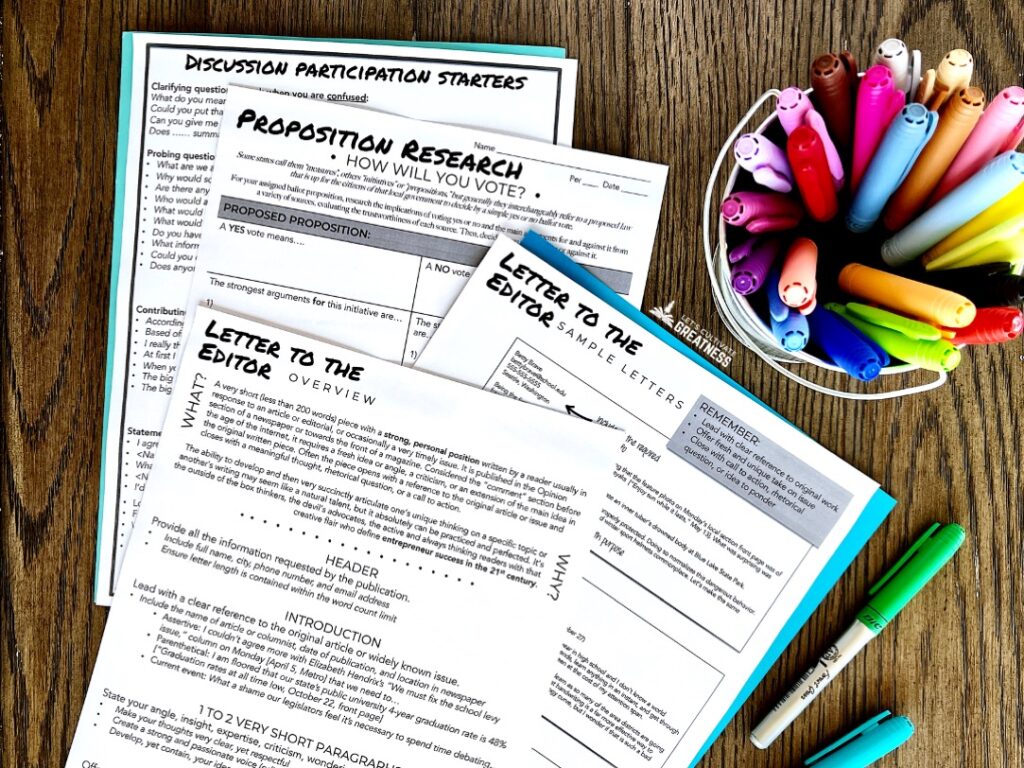
Both these activities are available in my Ballot Proposition Research PBL Kit.
Compare the Candidates
Look over what races are on this year’s ballot and pick a few to focus on. Don’t try to cover them all!
For those chosen 3-5, go over the requirements of the job, which often is listed in your voter pamphlet, then lead students in brainstorming the qualifications they want in the people who will fill those jobs.
Then, give students a handful of quality sources and time to explore the candidates, just like we adults dedicated the time to do.
Good sources to gather up: voter pamphlet, candidates’ official campaign websites, newspaper endorsements, editorials, and commercials.
If you have time, challenge students create questions for each candidate, based on their research. Have them email or call the candidates and see what kind of responses they receive.
I do this with local and state candidates and it’s pretty cool to watch the impressions students form based on the responses, or lack thereof!
My Candidate Research PBL Kit has everything you need to do these activities.
Lastly, Hold a Mock Election
Since students have done all this great work, be sure to hold a mock election on Election Day for them.
Make a big deal about it! Deck out a ballot box. Wear red, white, and blue. Hand out “I voted” stickers. Be over the top.
Above all else, though, make it clear that voting is voluntary and anonymous, just like in real life.
Then on the day after Election Day, compare the official results from your state or county election website with your students’.
Click below to grab my complete Voting & Election PBL Unit with these activities and more!
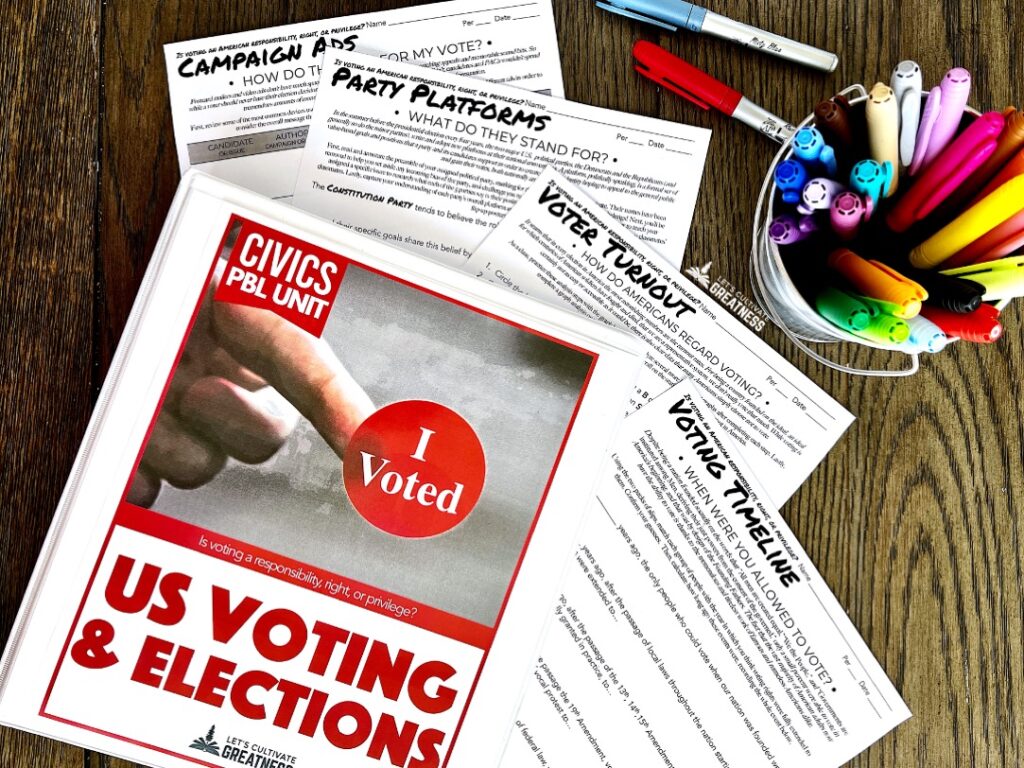
I hope these doable ideas help you bring election season into your classroom and turn your students into voters! But does ready-to-go and everything-done sound even better? My full Voting & Election inquiry PBL unit incorporates all these activities and a bunch more. Plus, it’s built to work for any election year.
Feature image photo credit: Element5 Digital


